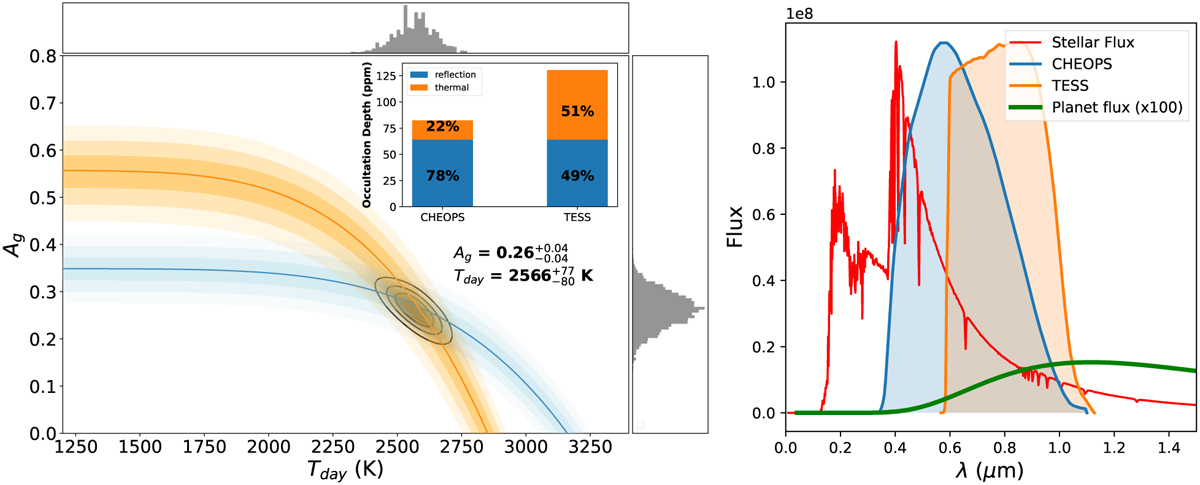Fig. 5

Download original image
Dayside reflection and emission brightness contributions. Left: geometric albedo (Ag) as a function of the dayside brightness temperature for the estimated occultation depths in CHEOPS (blue) and TESS (red). The decreasing intensity of the colour shades corresponds to the 1 σ, 2 σ, and 3 σ uncertainties in the computation of Ag for each Tday. The overlapping region provides the true constraints on the two parameters represented by the posterior distribution in grey. The individual posteriors of (Ag) and (Tday) are presented in the side panels. The resultant values are reported in the text. Subpanel: reflection and emission contributions to the occultation depth of the CHEOPS and TESS passbands. The identical height of the reflection component reflects the assumption of α = 1. Right: Kurucz stellar model [Teff = 9000, [Fe/H] = 0 and log = 4.5] along with the CHEOPS and TESS passband responses. The dayside planetary black-body flux (×100) is also plotted for a comparison with the stellar flux. Tday = 2600 K.
Current usage metrics show cumulative count of Article Views (full-text article views including HTML views, PDF and ePub downloads, according to the available data) and Abstracts Views on Vision4Press platform.
Data correspond to usage on the plateform after 2015. The current usage metrics is available 48-96 hours after online publication and is updated daily on week days.
Initial download of the metrics may take a while.


